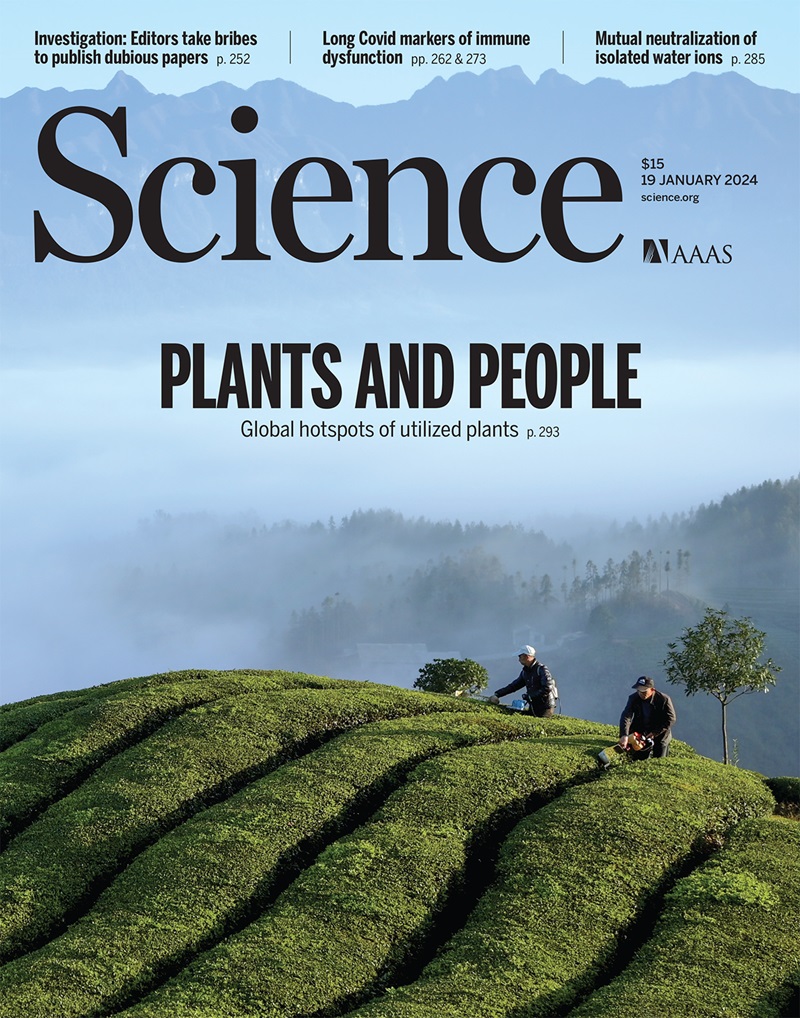Photochemical phosphorus-enabled scaffold remodeling of carboxylic acids
IF 44.7
1区 综合性期刊
Q1 MULTIDISCIPLINARY SCIENCES
引用次数: 0
Abstract
The excitation of carbonyl compounds by light to generate radical intermediates has historically been restricted to ketones and aldehydes; carboxylic acids have been overlooked because of high energy requirements and low quantum efficiency. A successful activation strategy would necessitate a bathochromic shift in the absorbance profile, an increase in triplet diradical lifetime, and ease of further functionalization. We present a single-flask transformation of carboxylic acids to acyl phosphonates that can access synthetically useful triplet diradicals under visible light or near-ultraviolet irradiation. The use of phosphorus circumvents unproductive Norrish type I processes, promoting selectivity that enables hydrogen-atom transfer reactivity. Use of this strategy promotes the efficient scaffold remodeling of carboxylic acids through various annulation, contraction, and expansion manifolds.
光化学磷重塑羧酸支架
用光激发羰基化合物以产生自由基中间体的方法历来仅限于酮类和醛类化合物;羧酸类化合物由于能量要求高、量子效率低而被忽视。成功的活化策略需要吸光度曲线发生浴色偏移、三重二极体寿命延长以及易于进一步官能化。我们介绍了一种将羧酸转化为酰基膦酸盐的单瓶转化方法,这种方法可以在可见光或近紫外光照射下获得合成上有用的三重二叉物。磷的使用避免了非生产性的诺里什 I 型过程,提高了选择性,从而实现了氢原子转移反应。利用这种策略,可以通过各种环化、收缩和扩张歧管促进羧酸支架的高效重塑。
本文章由计算机程序翻译,如有差异,请以英文原文为准。
求助全文
约1分钟内获得全文
求助全文
来源期刊

Science
综合性期刊-综合性期刊
CiteScore
61.10
自引率
0.90%
发文量
0
审稿时长
2.1 months
期刊介绍:
Science is a leading outlet for scientific news, commentary, and cutting-edge research. Through its print and online incarnations, Science reaches an estimated worldwide readership of more than one million. Science’s authorship is global too, and its articles consistently rank among the world's most cited research.
Science serves as a forum for discussion of important issues related to the advancement of science by publishing material on which a consensus has been reached as well as including the presentation of minority or conflicting points of view. Accordingly, all articles published in Science—including editorials, news and comment, and book reviews—are signed and reflect the individual views of the authors and not official points of view adopted by AAAS or the institutions with which the authors are affiliated.
Science seeks to publish those papers that are most influential in their fields or across fields and that will significantly advance scientific understanding. Selected papers should present novel and broadly important data, syntheses, or concepts. They should merit recognition by the wider scientific community and general public provided by publication in Science, beyond that provided by specialty journals. Science welcomes submissions from all fields of science and from any source. The editors are committed to the prompt evaluation and publication of submitted papers while upholding high standards that support reproducibility of published research. Science is published weekly; selected papers are published online ahead of print.
 求助内容:
求助内容: 应助结果提醒方式:
应助结果提醒方式:


